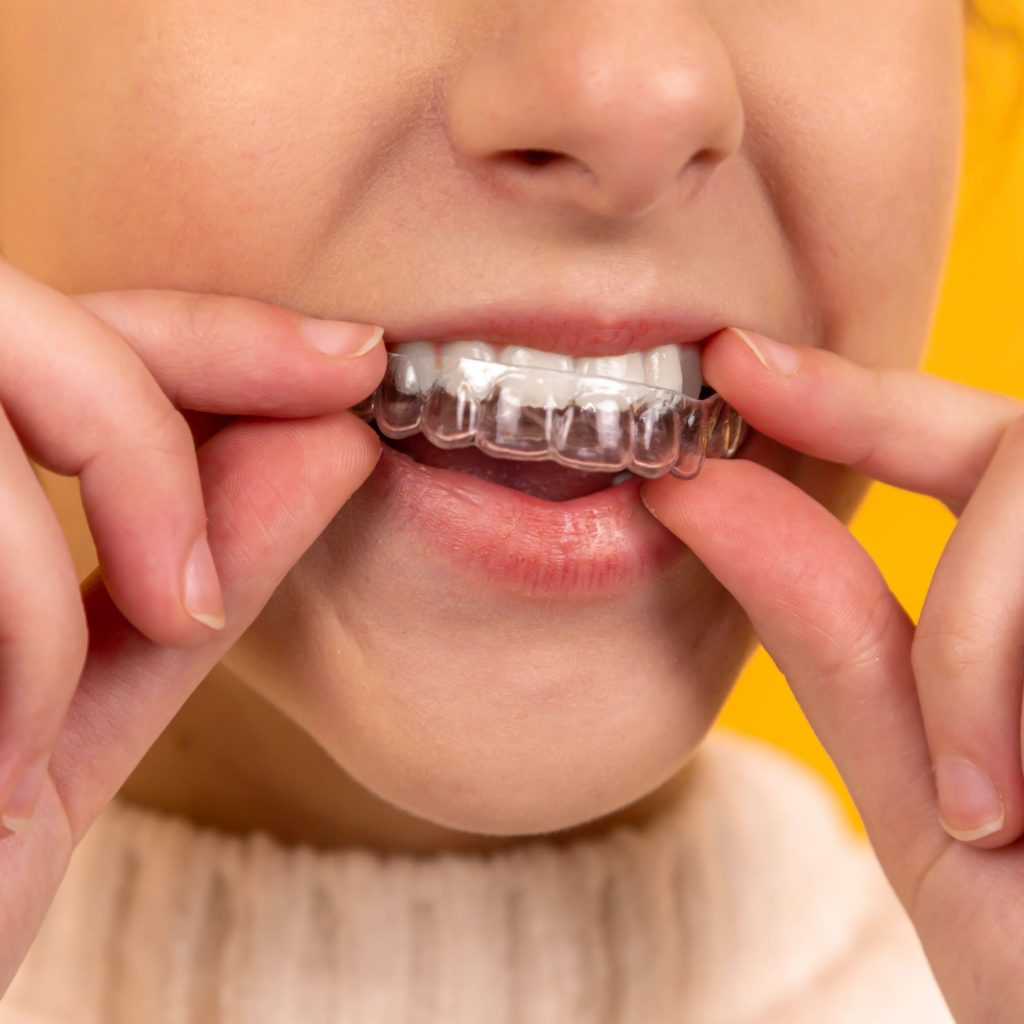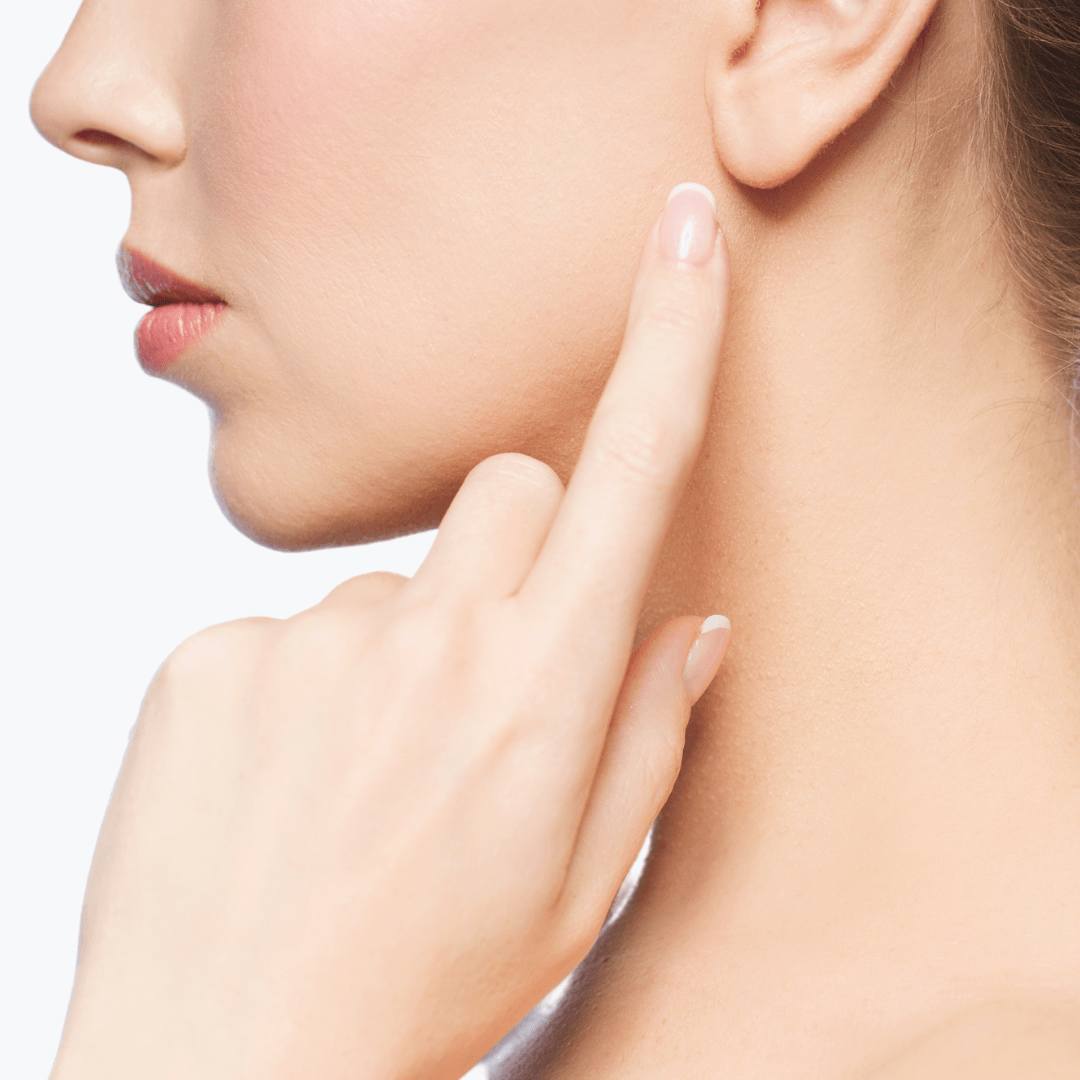Bruxism is a common problem, especially in young adulthood. Every fifth adult is affected. A distinction is made between teeth grinding and teeth clenching. However, there is also a pure tensing of the jaw muscles without tooth contact. All variants involve unconscious muscular activity that takes place either during the day or at night. Interestingly, daytime bruxism appears to be almost twice as common in adults as nighttime teeth grinding and clenching. Bruxism is not a disease in itself, but it can cause relevant health risks.
Bruxism is repetitive masticatory muscle activity characterized by jaw clenching and grinding and/or tensing or shifting of the mandible without tooth contact. Bruxism occurs in two circadian manifestations that can be distinguished: it can occur during sleep (sleep bruxism) and during wakefulness (awake bruxism).
The unpleasant consequences of bruxism are, on the one hand, tooth damage due to increased wear. On the other hand, bruxism usually leads to tension of the jaw muscles themselves and thus to pain. Some notice hypersensitivity of the necks of the teeth, fatigue of the affected muscles, or a mouth opening that feels as if it is rusty. The imbalance in the head and neck muscles can also manifest itself in headaches and radiating pain in the neck. Pain may even radiate into the ear. A connection with craniomandibular dysfunction (CMD) and temporomandibular joint problems is possible. Since it is usually a chronic symptomatology, bruxism can cause a high level of suffering. Many sufferers experience the discomfort as a psychological burden.
What is the cause of bruxism?
There are some medications and diseases that can trigger bruxism. The diseases include sleep apnea (=breathing stops during sleep) and reflux disease. In both diseases, the jaw muscles are reflexively tensed as a protective mechanism. It makes sense to have these treatable diagnoses clarified by a doctor if one suffers from chronic tension of the masticatory muscles.
In most cases, however, no single trigger is found in bruxism. This is called primary bruxism. In this case, genetic factors, stress, anxiety, neuroactive substances (e.g., alcohol, caffeine), and sleep disturbances may be involved in its development. It is thought to be a "stress processing" mechanism that is unconsciously and automatically controlled by certain brain centers during sleep and wakefulness.

Treatment options for bruxism
In fact, there is no causal treatment method for primary bruxism. This means that you cannot treat the cause, but instead try to alleviate the symptoms. The earlier the problem is identified and treated, the better. This can prevent the increase of symptoms and subsequent damage.
The current evidence-based guideline "Diagnosis and treatment of bruxism" lists the different treatment methods.
1. splint therapy
In most cases, the first treatment attempt for bruxism is to have a bite splint made by the dentist. A dental visit makes sense in any case, as the clinical signs of bruxism can be determined. This allows a diagnosis to be made. Objective signs include enlarged masseter muscles (which can also be painful when pressed), wear and tear on the teeth, exposed necks of the teeth, and teeth marks on the edge of the tongue and cheek. All of these signs may not always be present. The diagnosis of bruxism can still be made.
Dental splints can reduce the activity of the masticatory muscles and distribute forces evenly. As a result, pain can be alleviated. Above all, the splints serve to protect the teeth from further wear. They can also prolong the life of fillings and crowns.
Splint therapy is usually covered by public and private health insurance. Dentists can also provide information about the consequences of bruxism and perform regular check-ups, which are also covered by insurance.
2. manual therapy
Manual therapies are further therapy methods in which the affected musculature is treated directly. Manual therapy can provide relief especially for painful muscles, radiating pain and tension. Manual methods include physiotherapy, osteopathy and medical massage. The goals of treatment are to relax the masticatory muscles and improve the mobility of the temporomandibular joints. The therapist can also provide guidance for self-treatment.
3. relaxation methods, biofeedback and psychotherapy
If teeth grinding or clenching occurs during the day (so-called awake bruxism), then you can try to do something about it yourself. It is recommended to put colored stickers or small sticky notes on objects (mirrors, screens, clocks). This is to remind you to open your mouth with closed lips and then close it again so that your teeth do not touch. Mindfulness, improved self-observation and learning a "normal" relaxed jaw position are the goals of these relaxation exercises. Active muscle relaxation can, of course, only be used during the day. However, since the increased muscle activity usually occurs completely unconsciously and during periods of high concentration, learning this method can be difficult.
Biofeedback involves the use of devices that are designed to stimulate muscle activity by means of a signal. These devices can also be used at night for sleep bruxism. However, a disadvantage is that it can wake you up, which then also leads to disturbed night sleep.
Cognitive behavioral therapy, autogenic training and progressive muscle relaxation can be mentioned as psychotherapeutic methods. These tend to aim at a longer-term improvement. Since bruxism often occurs more frequently in connection with stress, it can make sense to deal with stress factors and one's own thought and behavior patterns within the framework of psychological procedures. Even if an improvement of the complaints could already be achieved by another treatment method.
I read that jaw muscles can also be treated with BTX®. My jaw muscles are chronically tense and painful. I don't grind, but clench my teeth. I also had a splint from the dentist, but that didn't help.
4. medicinal muscle relaxation
The masticatory muscles can develop forces of up to 950 newtons during crunching and pressing. The masseter muscle, the strongest of the four masticatory muscles and the strongest muscle in our body, is significantly involved. Treatment of the muscle with BTX® is a rapidly effective method to temporarily reduce muscle activity and relieve pain. It is mainly used when splint therapy has not brought any improvement. It is a so-called "off-label use". The patient must be informed about this before treatment. At present, none of the BTX® preparations available in Germany has official approval for the treatment of bruxism. However, clinical experience as well as medical studies and the current guideline clearly indicate an efficacy of BTX® treatment for bruxism.
In my practice in Munich I offer the Masseter treatment with BTX® as a therapy for bruxism.
FAQ: Frequently asked questions about masseter treatment for bruxism
How does a masseter treatment for bruxism work?
After disinfection, the medication is injected directly into the chewing muscles using a very fine needle. Sometimes a slight burning sensation can be felt. The treatment only takes a few minutes. The muscle-relaxing effect usually begins after 2-7 days. This often results in a significant improvement in the symptoms. After about 14 days, the effect is fully pronounced. In the case of masseter hypertrophy, the facial slimming effect usually begins after 4-6 weeks.
Is the masseter treatment for bruxism painful?
The injection is usually not even noticeable because the needle used is extremely thin. A slight burning sensation may be felt during the injection. This may make the treatment a little uncomfortable, but not really painful.
Are there any side effects?
Apart from a slight reddening at the injection site, this is a treatment with very few side effects for an experienced double-appointed doctor and dentist. Rarely, a small bruise may occur at the injection site. Precise knowledge of anatomy is necessary to ensure that the medication actually reaches the target muscle. Mild muscle pain can occur about a week after the injection, but quickly disappears ("like sore muscles"). Only when chewing hard food can you occasionally notice that the chewing muscles are slightly weaker than usual.
How long does the effect of the treatment last?
Masseter treatment is expected to be effective for 4-6 months. The duration of effect can be extended with repeated treatments. I recommend not chewing gum after the Masseter treatment in my practice in Munich in order to achieve the longest possible duration of effect.
How much does a Masseter treatment cost?
Bruxism treatment in my practice in Munich costs between €465 and €650, depending on the dose and the amount of treatment required.
Does the health insurance cover the costs?
Private health insurance companies often cover the costs if the diagnosis already exists. The assumption of costs must be clarified before treatment. The presence of bruxism should always be confirmed beforehand during a dental examination. The dentist can also determine whether splint therapy is initially advisable. If the health insurance does not cover the costs, then this is a self-payer service.
All other questions can be discussed at a consultation appointment in my practice in Munich. A consultation is also possible via the video consultation.






